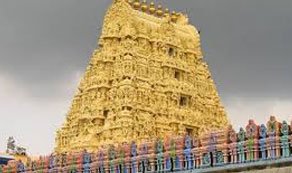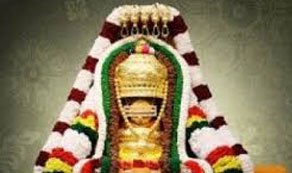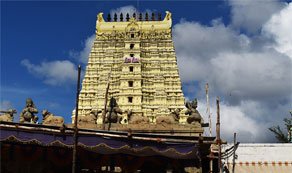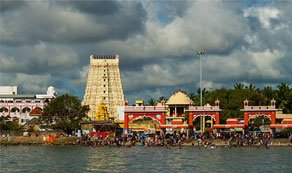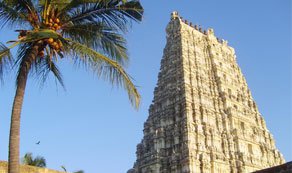Ramanathaswamy Temple

Ramanathaswamy Temple:A Sacred Haven of Hindu Faith and Legend:
The Holy home of the Hindu God, Shri Ram (addressed with reverence and humility), is a virtual heaven for the faithful. No Hindu voyage is complete without a pilgrimage to Varanasi and Rameswaram as the end of his quest for salvation, which is commemorated by the epic 'Ramayana'. Folklore describes God Ram's presence in this country following his 14-year banishment.
According to a local tradition, after defeating the demon Ravana, Shri Ram was assisted by his brother Lakshman and Hanuman, together with his army of thousands of monkeys, in returning to Rameswaram and India. They contributed to the construction of a bridge that across the "Sethu canal" and led to Lanka using sea and shore pebbles. There is a strong belief that bathing in the 22 "Theerthams," or natural springs, is a step toward enlightenment because Lord Rama is also thought to have sanctified this place by worshiping and glorifying Lord Shiva. This marks the confluence of Shaivism and Vaishnavism and is therefore revered by both Shaivites and Vaishnavites alike. Rameswaram has thus been appropriately designated as one of the National Pilgrim Centres in the count.
For every traveler, the Ramanathaswamy temple is a treat in and of itself. The temple features an impressive, imposing construction, lengthy hallways, and beautifully carved pillars. A towering 38-meter "Gopuram" is also a feature of the temple. The magnificent Ramanathaswamy temple, which is home to the "Third Corridor," was started by Sethupathy Maravar in the 12th century and finished by his successor, Maravar. This corridor is the longest in Asia, spanning 197 meters from East to West and 133 meters from South to North, making it the third largest in the world! It is reported that in 1897, Swamy Vivekananda prayed at this temple. It is also one of the twelve temples known as Jyothirlingas, where Shiva is revered as a Jyotirlingam.





